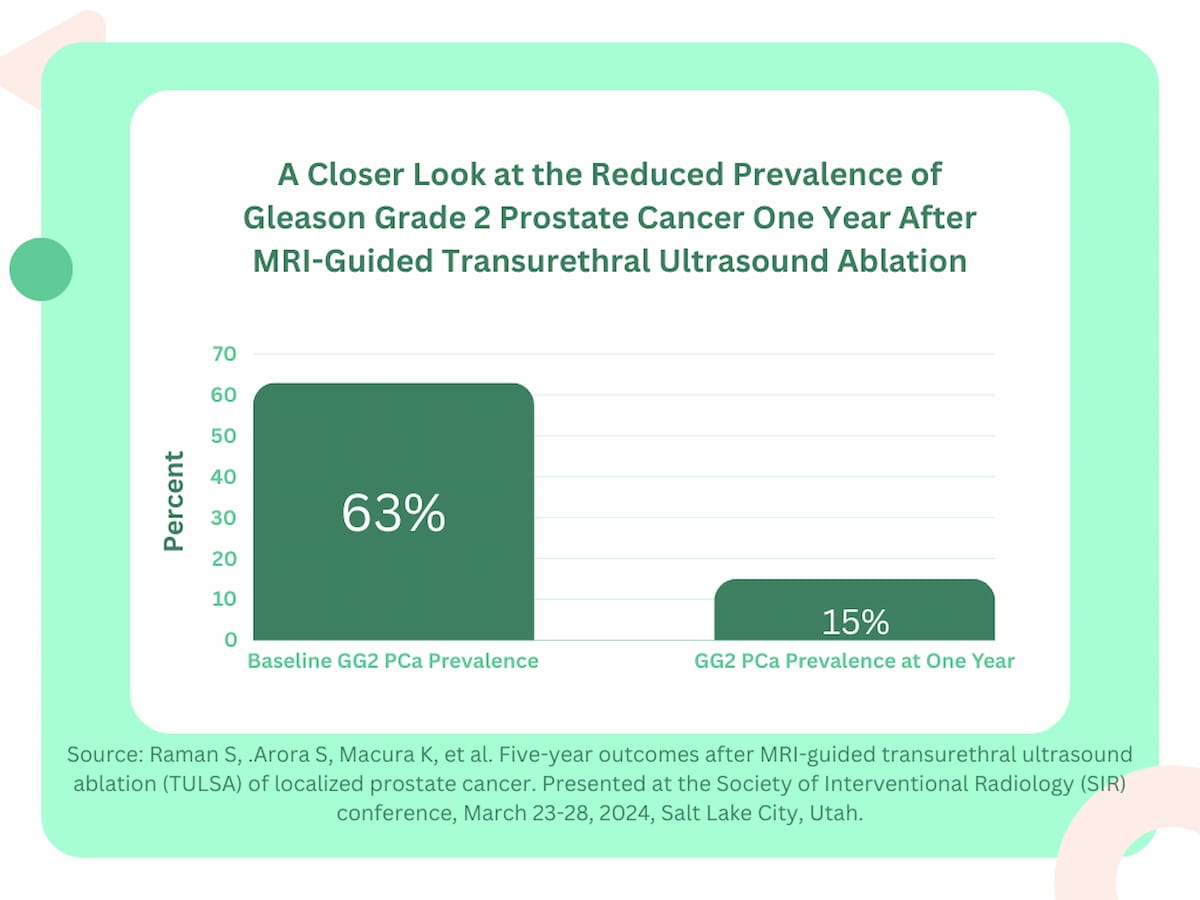The use of transurethral ultrasound ablation (TULSA), guided by magnetic resonance imaging (MRI), led to a 48 percent reduction in the presence of Gleason Grade (GG) 2 prostate cancer within one year of treatment, according to new research presented at the Society of Interventional Radiology (SIR) conference.
For the multinational study, researchers assessed the use of MRI-guided TULSA in 115 men with GG2 and GG1 prostate cancer (PCa), and a prostate-specific antigen (PSA) level < 15 ng/mL. The cohort received one TULSA treatment, which spared the prostatic urethra and urinary sphincter, according to the study. The study authors added that MR thermometry was utilized for monitoring of the tissue heating with the TULSA treatment.
One year after treatment, the researchers noted a 92 percent reduction in median prostate volume from 37.3 ml to 2.8 ml. The study authors also noted a significant reduction in median PSA levels from 6.3 ng/mL at baseline to 0.26 ng/mL at one year. At the beginning of the study, 63 percent of the cohort (72/115) had Gleason grade 2 PCa, a number that decreased to 15 percent (17/111) at one year.
“This image-guided therapy maximizes our ability to kill cancer cells while minimizing collateral damage to the prostate to achieve the ultimate trifecta in prostate cancer treatment: full local cancer control while maintaining urinary continence and potency. The latter are the complications of most prostate cancer therapies that patients hate and often result from a lack of precision in treatment monitoring,” noted Steven Raman, M.D., a professor of radiology, urology and surgery at the David Geffen School of Medicine at the University of California, Los Angeles (UCLA).
The researchers pointed out that the median PSA level remained low at five years (0.63 ng/mL). In other five-year outcomes, Raman and colleagues noted that 92 percent of patients had recovered pad-free continence and 87 percent had preserved erectile function.
“5-year follow-up demonstrates durable oncologic control, safety, and functional preservation after a single whole-gland TULSA procedure,” maintained Raman and colleagues.
